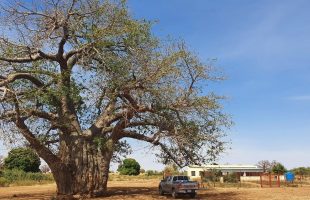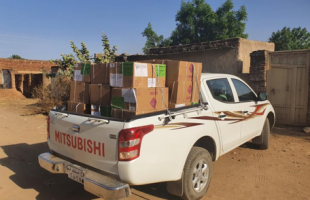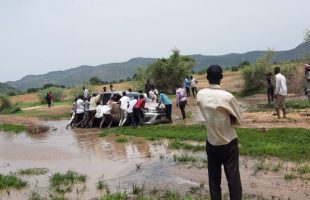Sudan
Humanitarian context
Sudan is a very diverse and vast country, at the cross roads between Africa and the Middle-East. Sudan hosts over one million refugees from neighbouring countries, but also Syria and Yemen, and its people are known for their generosity, hospitality and kindness. The country have been affected by internal conflicts for decades and intra-communal fights continue to be the cause of displacement, especially in Darfur and Kordofan states. After the 2019 Revolution, ending 30 years of Omar Bashir’s rule, Sudan is still facing a severe socio-economic crisis, leaving millions of people in need.
In 2022, 14.3 million people in Sudan are in need of humanitarian assistance, the highest number ever recorded in the history of the country. Ongoing conflict in Ukraine is having an impact in Sudan, due to dependency in wheat importation and spiralling price increases of bread and fuel. According to the World Food Programme (WFP) the number of people living under acute food insecurity reached 15 million in June 2022.
Key figures
implementation
Description of the mission
Première Urgence Internationale returned to Sudan in 2020, launching health and nutrition activities in South Kordofan. The mountainous region, close to the border with South Sudan, have been affected by years of conflict and isolation. Between January 2021 and May 2022, Première Urgence Internationale provided life-saving assistance to remote and hard to reach communities in South Kordofan, strengthening health services through the rehabilitation of three health facilities, training, supervision and provision of essential drugs and equipment.
Première Urgence Internationale launched health and nutrition activities in support to existing health facilities in the surroundings of refugee camps in Gedaref State. Today, Première Urgence Internationale is supporting four health facilities in hard-to-reach areas providing life-saving and life-sustaining services to local communities, refugees, migrants and asylum seekers.
In 2022 and 2023, Première Urgence Internationale intends to respond to rising needs in West Darfur, where inter-communal fighting have been displacing several hundred people, while continuing on supporting existing health facilities and medical staff, contributing to the improvement of health and nutrition status of affected populations in Eastern Sudan.
Premiere Urgence Internationale in action
Première Urgence Internationale’s interventions aim to provide an integrated response to the most urgent and life-saving needs of vulnerable populations, including refugees, migrants, internally displaced people, women and children living in remote and hard-to-reach areas. Première Urgence Internationale strives to ensure sustainability, efficiency and effectiveness of its interventions, counting on a committed, experienced and dedicated team.
In Gedaref state, with the support of the Crisis and Support Center, Première Urgence Internationale intervened to support three health facilities in Tenetba, Basonda and Abu Rakham. These centers are located close to the refugee camp, also serving the surrounding host communities.
Since January 2022, through the support of the United Nations High Commissioner for Refugees (UNHCR), Première Urgence Internationale is ensuring the continuity of health and nutrition services for Ethiopian refugees and host population in Village 8 transit camp and surrounding areas.
In May 2022, thanks to the support of the Comité Interministériel d’aide Alimentaire (CIAA), Première Urgence Internationale and Solidarités International launched a complementary project, aiming at strengthening the food security and nutrition conditions of vulnerable populations in Gedaref state. This project has the objective of addressing emergency food and nutritional needs of families with children reported with Severe Acute Malnutrition, while strengthening community resilience, promoting best practices and raising awareness, to reduce the impact of malnutrition, especially among pregnant and lactating mothers, infants and young children.
Mission news
How your donations are used?
 Each year, Première Urgence Internationale allocates most of its resources to the programs and activities and only 0.2% to fundraising. Your donations are crucial.
Each year, Première Urgence Internationale allocates most of its resources to the programs and activities and only 0.2% to fundraising. Your donations are crucial.












